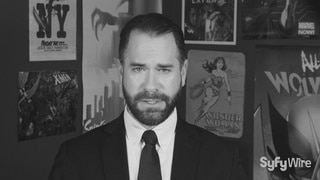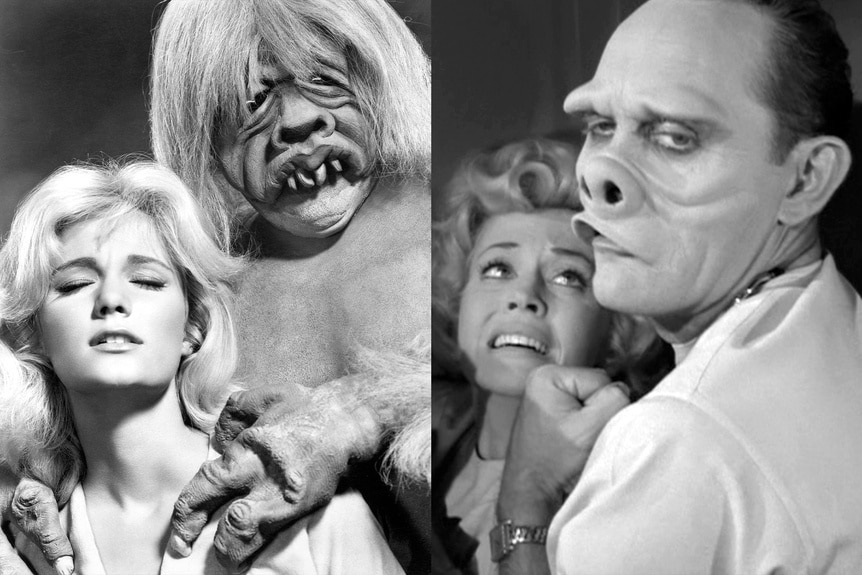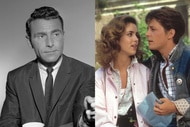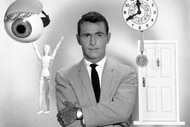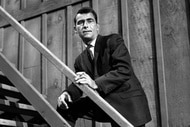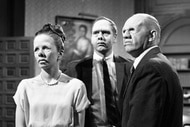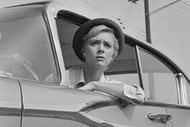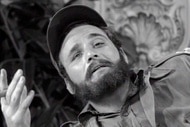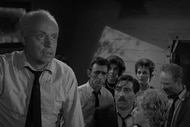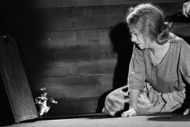Create a free profile to get unlimited access to exclusive videos, sweepstakes, and more!
One of The Twilight Zone's Most Iconic Makeup Effects Was Inspired by a 1960 H.G. Wells Adaptation
Necessity is the mother of invention!
no6h
Necessity is the mother of invention, as the original iteration of The Twilight Zone (airing regularly on SYFY) proved again and again in the face of limited budgets, tight shooting schedules, and ever-restrictive mandates handed down by sponsors and the network.
Making more with less was always the driving factor behind production, and no Twilight Zone episode embodies that philosophy better than Season 2's "The Eye of the Beholder" (originally titled "The Private World of Darkness" for air in November 1960), which remains one of the anthology's priceless crown jewels. It's been copied and parodied so often over the decades, that a synopsis would be rather futile, but needless to say, "The Eye of the Beholder" is a masterclass in blocking, lighting, acting, themes, and, of course, subverting audience expectations.
More importantly, one can still enjoy the episode with the famous twist in mind; the sheer creative and transcendental mastery on display across the 25 minutes perfectly directed by Douglas Heyes holds you captive every single time without fail. And when the lights finally do turn on, those pig-like punims of the doctors and nurses never fail to evoke feelings of revulsion. What you might not know, is that the super-iconic makeup designed by William Tuttle was semi-inspired by the 1960 film adaptation of H.G. Wells' The Time Machine, which, fittingly enough, starred Twilight Zone alum, Rod Taylor ("And When the Sky Was Opened").
The Twilight Zone's iconic "Eye of the Beholder" makeup was inspired by The Time Machine
While Heyes and Tuttle did get a healthy jumpstart on the look of what the members of this upside down society would look like, the main obstacle standing in their way was, as you might expect, money. There just wasn't enough in the budget for the original plan, which involved the creation of extensive makeup effects that would have completely covered the actors' faces and heads.
"The first problem on the makeup ... was that it was going to be too expensive," Heyes explains in Marc Scott Zicree's The Twilight Zone Companion. "When we did those faces for 'Eye of the Beholder,' Tuttle had just done The Time Machine, and he had created those Morlocks. When he told me the problem as far as cost, I went down to his department and I saw some of the pieces that he had put the Morlocks together with, and I said, 'Bill, why can't we do something like this just make some pieces and paste them on?'"
In the end, Tuttle created several "variations of a brow pierces and a large piece that covered the nose, cheeks, and upper lip," writes Zicree. The less is more approach ultimately proved advantageous, owing to the fact that these prosthetics did not fully inhibit the performances and actually helped reinforce the intentional mislead of the audience.
"The individual characteristics of the actors could still show up — their cheekbones, their jawlines, their ears," Heyes explains. "Another thing is that by doing that, I was able to photograph the backs of heads and eras and things like that, which were perfectly normal. It was only frontally that they looked different."
Classic episodes of The Twilight Zone air regularly on SYFY. Click here for complete scheduling info!

